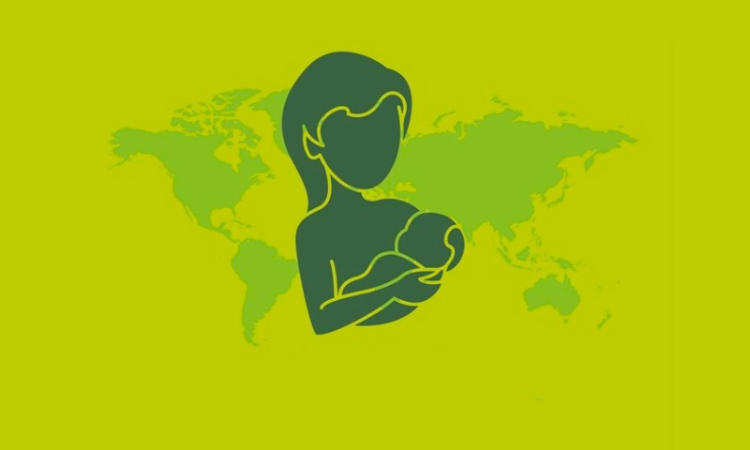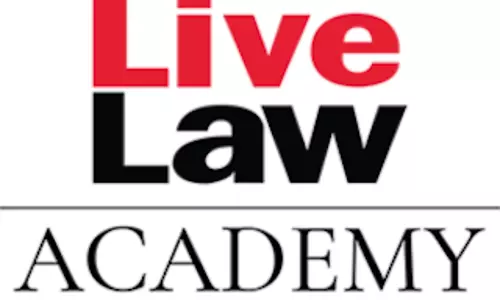Do Women Have Right To Publish Breastfeeding Content?
Soumya Chakrabarti & Farhan Matin
20 April 2025 9:30 AM IST

Recently six European companies have accused social media platforms like Meta and Google of content moderation bias against women. A recent report by Centre for Intimacy Justice has revealed that these Big Tech Giants are censoring sexual and reproductive healthcare content for women, but allowing the same for men. This has again raised concerns regarding content moderation in digital space.
At an age when social media has been proved as an effective tool for promoting sexual and reproductive health awareness, the question of balanced content moderation becomes necessary in order to ensure that these platforms adhere to the standards of decency and public morality. While content displaying nudity are mostly prohibited by social media platforms like Facebook, Instagram etc., there are some necessary exceptions for the promotion of health awareness and literacy. Breastfeeding is one such exception. The Instagram Community Guidelines states that nudity is not allowed but images of post-mastectomy scarring, breastfeeding and nudity in paintings are exceptions. Other social media platforms also have similar guidelines. However, critics argue that nursing images on digital platforms can sometimes lead to various issues like online harassment, use of such images for sordid purposes etc.
Although, it is a settled law that a woman has a right to breastfeed her child under Article 21 of the Constitution as held by the Supreme Court in Maatr Sparsh An Initiative By Avyaan Foundation v. Union Of India & Ors., status regarding the right to post breastfeeding images on digital platforms is ambiguous. This blog explores whether the act of posting such images on digital platforms comes within the ambit of freedom of expression or if reasonable restrictions should be imposed, considering the norms of public morality.
Freedom Of Expression V. Public Morality
Freedom of expression has been recognised as one of the basic human rights in all the democratic nations and is protected by various international and regional human right statutes. The United Nations Declaration of Human Rights, 1948 and International Covenant on Civil and Political Right, 1976 provides for protection of freedom of expression under Article 19. The Constitution of India also provides for the Right to Freedom of Speech and Expression as a Fundamental Right under Article 19(1)(a). However, this right is not absolute and is subject to certain reasonable restrictions. Article 19(2) of the Constitution of India provides for the reasonable restrictions which includes decency and morality.
The term decency and morality are however, not defined in any statute and is subject to various interpretations. The Cambridge dictionary defines decency as “behaviour that is good, moral, and acceptable in society.” The Oxford Learner's dictionary also defines decency in a similar manner. The Supreme Court of India in Aveek Sarkar v. State of West Bengal, while discussing a case related to obscenity held that obscenity has to be judged by applying contemporary community standard. Hence, it is a settled position that decency and obscenity are subjective to community standards.
Generally, breastfeeding contents are not considered obscene because their main purpose is to spread awareness and not to 'excite lustful thoughts.' It is indeed acknowledged that breastfeeding contents on social media has contributed in maternal and child health awareness. However, with the growing incidence of cybercrimes and with technology being used as a tool for harassment, there exists a genuine concern regarding the negative implications of breastfeeding images on social media. The following sections explore these implications in detail.
Concerns Regarding Breastfeeding Contents
Firstly, while breastfeeding is a natural phenomenon and may not be considered against the moral standards of one community, it might be viewed as obscene by another. As accurately articulated by the Kerala High Court, “beauty lies in the beholder's eye, so does obscenity.” These subjective standards of decency of different communities coexist at platforms like Instagram, YouTube etc. In such a scenario, by allowing breastfeeding contents, the social media platforms risks imposing standard of decency of one community over other.
Secondly, breastfeeding images can be used for commercial exploitation, and it might further be used as a loophole to publish obscene content on social media in an authorized manner. While primarily, nursing images are posted to celebrate motherhood or to advocate normalizing breastfeeding, sometimes people become victim of the commercialized nature of digital platforms. This poses a threat to the privacy of concerned mothers and their child, as these images get used for commercial purposes in the garb of advocacy for breastfeeding, even without their consent.
Thirdly, there are no uniform rules among different social media platforms regarding nudity. For instance, Twitter allows women to show their nipples, but Instagram doesn't allow except breastfeeding contents. In 2021, Facebook removed an ad of a famous baby bottle brand showing a breastfeeding woman by stating that it was showing nudity. This creates no uniformity in rules related to nudity among different social media platforms. Moreover, many social media platforms have changed its guidelines after the rise of #FreetheNipple movement.
Lastly, the women sharing the breastfeeding images might also face harassment or voyeurism. There have been instances when the nursing images posted by women have been taken out of context or have been deliberately used, without consent, as pornography.
Consequently, there is a pressing need to enforce safety measures in order to mitigate such adverse implications.
Court's Position
Although, the Indian courts have not yet explicitly recognized the right to post breastfeeding content on social media platforms but they have discussed the scope of freedom of expression and decency in a number of judgements. The most pertinent judgement concerning the issue at hand is Felix M.A. v. P.B. Gangadharan (2018) (also known as Grihalakshmi case). In the aforementioned case, the petitioner complained that the cover page of a magazine, depicting image of a breastfeeding woman, was obscene. However, the court, while dismissing the petition, observed that the picture's posture and background suggests that the same has not been used for 'exciting lustful thoughts.' Hence, it cannot be considered as prurient or obscene.
The judgement suggests the court's inclination towards the recognition of right of posting breastfeeding content publicly within the ambit of freedom of expression.
The Indian Courts have, time and again, interpreted the scope of freedom of speech and expression quite liberally with the only exception being the limitation imposed by the Constitution itself. As the courts are of the view that breastfeeding images are not obscene per se, hence it can be inferred that the right to post breastfeeding content on digital platforms will come within the ambit of freedom of speech and expression.
However, considering the possible negative implication, the author is of the opinion that there is a need to implement detailed and uniform guidelines for all social media platforms posting such content so that their misuse can be prevented. It would also help users to challenge the arbitrary takedowns of such content by social media platforms, on grounds of nudity, without giving much more description.
The authors are students at Jamia Millia Islamia, New Delhi. Views are personal


